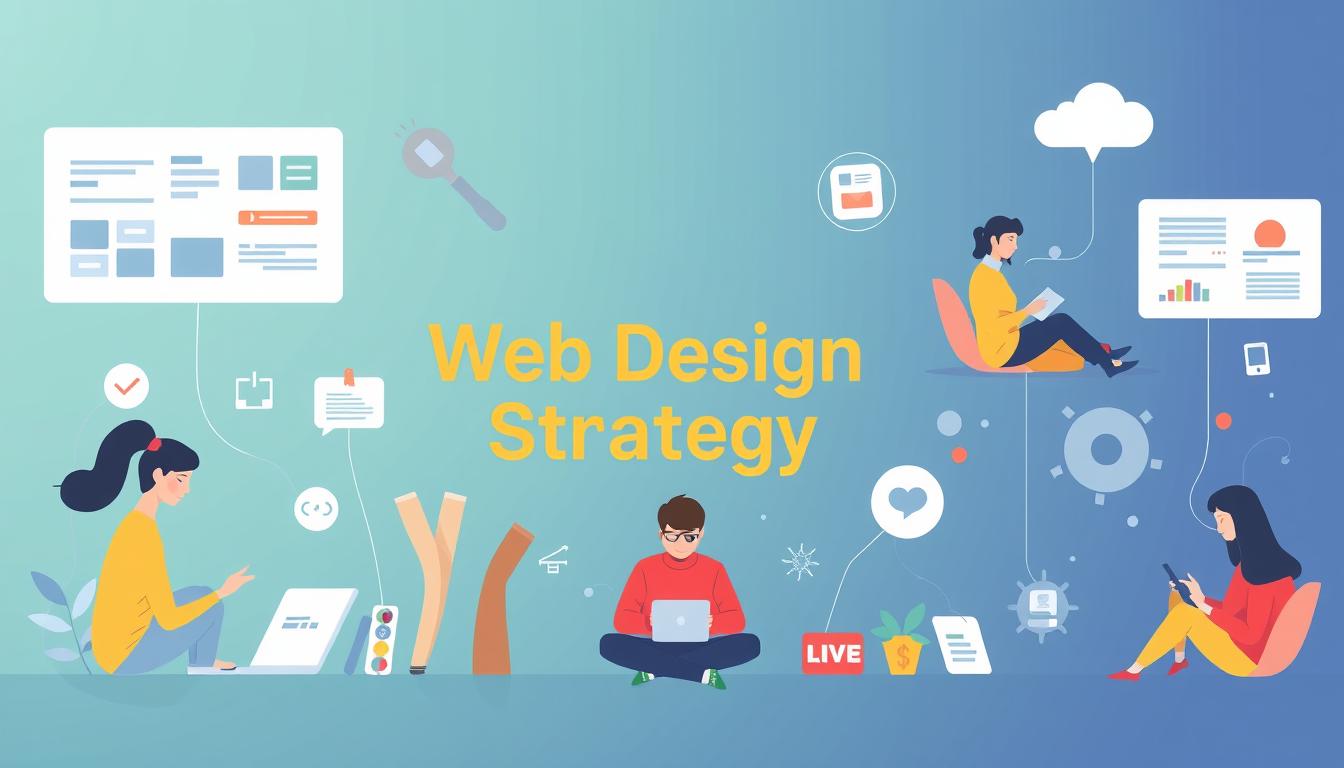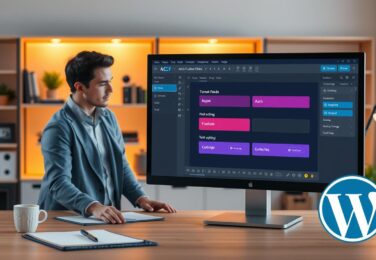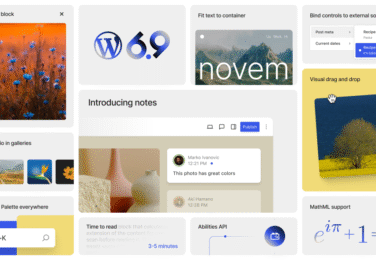What is the Importance of User-Centric Web Design for Business Success

Table of Content
Every digital journey starts with a single click. For Australian businesses, that click can be very important. Web design is not just about making a website look good. It’s about creating an experience that meets your audience’s needs and expectations.
Think of walking into a shop that’s perfectly set up for you. That’s what user experience (UX) design aims for online. Our websites are more than digital signs; they’re interactive spaces that can greatly impact business success.
Today’s businesses know that great web design is more than looks. It’s about making websites easy to use. This helps users find what they need quickly, whether it’s to buy something, find information, or connect with your brand.
Key Takeaways
- User-centric design turns websites into dynamic tools for customer engagement
- Good web design leads to better business results
- Knowing how users behave is key for digital success
- Web design is a continuous process of improvement
- Invest in user experience to stand out in the digital world
Understanding User-Centric Web Design Fundamentals
Digital experiences aim to connect users with websites in meaningful ways. User experience (UX) is key to making online platforms successful. It helps keep users interested and engaged.
Responsive design is at the heart of modern web development. It makes sure websites work well on all devices and screen sizes. We design digital interfaces that meet user needs and expectations.
Key Principles of User-Focused Design
- Simplify navigation pathways
- Create clear visual hierarchies
- Minimise cognitive load for users
- Ensure consistent interaction patterns
The Psychology Behind User-Centric Approaches
Front-end development is more than just coding. It’s about understanding user psychology to make interfaces natural and engaging. Users want experiences that are:
- Intuitive
- Efficient
- Emotionally satisfying
“Design is not just what it looks like and feels like. Design is how it works.” – Steve Jobs
Core Elements of User-First Design Strategy
Good user-centric design combines several key elements. We aim to make digital experiences not just functional but also enjoyable. We pay close attention to every interaction point.
| Design Element | User Impact |
|---|---|
| Visual Clarity | Reduces confusion and increases comprehension |
| Interaction Design | Enhances user engagement and satisfaction |
| Performance Optimisation | Improves overall user experience and retention |
By focusing on user needs and using advanced front-end development, we turn websites into powerful tools. They connect with audiences in a meaningful way.
How User-Centric Design Drives Customer Engagement
User experience (UX) is key to digital success. Businesses that focus on customer engagement through smart web design build strong connections. We turn websites into dynamic platforms that meet user needs.
- Enhanced website navigation
- Intuitive interface interactions
- Personalised user journeys
- Increased conversion
“Design is not just what it looks like and feels like. Design is how it works.” – Steve Jobs
Website analytics are vital for understanding user behaviour. By tracking how users interact, we find areas to improve. Our data-driven approach ensures we always make things better for our customers.
| Design Element | User Impact | Engagement Metric |
|---|---|---|
| Responsive Layout | Seamless Experience | +45% User Retention |
| Intuitive Navigation | Reduced Bounce Rate | -30% Exit Pages |
| Clear Call-to-Action | Improved Conversion | +25% Click-through Rate |
Our dedication to user-centric design makes digital interactions valuable. This drives business growth.
The Impact of Web Design and Development on Business Growth
Digital transformation is key for businesses to stay ahead in today’s tech world. Web design and development help businesses grow by creating digital experiences. These experiences connect with customers and make operations smoother.
Successful businesses see web design and development as more than just a pretty website. They are strategic tools for reaching more customers and working better.
Modern Development Practices
Today’s web design and development focus on user experience and flexibility. Important practices include:
- Agile development methodologies
- Microservices architecture
- Continuous integration and deployment
- Cloud-native development strategies
Technical Aspects of Implementation
Back-end development is the core of advanced digital solutions. Strong technical work ensures websites and apps work well, are secure, and can grow.
“Innovative web solutions transform digital infrastructure from a cost centre to a strategic business asset.” – Tech Innovations Australia
Integration with Business Systems
Integrating web platforms with business systems is vital for better operations. This connection helps businesses:
- Manage data better
- Reduce manual work
- Make better decisions
- Improve customer service
Strategic web development helps businesses build digital ecosystems that drive growth and innovation.
Responsive Design: A Critical Component of User Experience

In today’s digital world, responsive design is key to great user experiences. People use many devices to access websites – from smartphones to desktops. A responsive design makes sure your site works well on all these devices, giving users a smooth experience.
User experience (UX) is all about making digital spaces easy and fun to use. Mobile-first design has changed how we think about websites. By focusing on mobile, businesses can:
- Improve website loading speeds
- Enhance visual consistency
- Reduce user frustration
- Increase overall engagement
“Design is not just what it looks like and feels like. Design is how it works.” – Steve Jobs
Creating responsive designs needs careful planning. Web developers must think about screen sizes, device features, and how users interact. Flexible grid layouts, scalable images, and adaptive content are essential for strong, user-friendly sites.
We aim to make responsive designs that are both good-looking and functional. By starting with mobile, businesses can boost their online presence and make users happier.
Measuring Success Through Website Analytics and User Behaviour
Understanding your website’s performance needs a smart approach to tracking analytics and user behaviour. Success online comes from using data to improve how users interact with your site. This turns those interactions into chances for your business to grow.
Good website analytics show how users interact with your site. By studying user behaviour, businesses can find key patterns. These patterns help improve design and make the user experience better.
Key Performance Indicators
- Bounce rate
- Time on page
- Conversion rates
- User engagement metrics
User Behaviour Tracking Methods
Today’s tracking methods give businesses deep insights into user actions. Heatmaps, session recordings, and advanced analytics tools help understand complex user journeys and preferences.
“Data tells a story – our job is to listen and understand.” – Digital Marketing Expert
Data-Driven Design Improvements
- Analyse user interaction patterns
- Identify possible friction points
- Make targeted design changes
- Keep measuring and refining
By using website analytics and tracking user behaviour, businesses can make their digital experiences better. These experiences will truly connect with their audience.
The Role of Content Management Systems in User Experience

Content management systems (CMS) have changed how we manage websites. They offer tools that make websites better for users. Now, businesses can easily update and manage their online content.
Modern CMS systems bring many benefits:
- Streamlined content updates
- Consistent design across web pages
- Enhanced website management capabilities
- Improved collaboration between team members
“A well-implemented CMS transforms digital content strategy from complex to seamless.” – Digital Experience Expert
Choosing the right CMS can make your website better and more engaging. We suggest picking a CMS that fits your business needs and user experience goals.
| CMS Feature | User Experience Impact |
|---|---|
| Responsive Design | Optimised viewing across devices |
| Custom Layouts | Personalised visual experiences |
| Quick Content Updates | Real-time information accuracy |
By focusing on user needs, businesses can make websites that are more engaging and easy to use. This helps connect with the audience better.
Optimising Website Security for User Trust
Digital security is now a top priority for online businesses. It’s not just a nice-to-have but a must-have to keep customer data safe and protect your online reputation.
Cyber threats keep getting smarter, so strong data protection plans are vital for Aussie businesses. Customers want to know their personal info is safe and secure online.
Security Best Practices
- Implement multi-factor authentication
- Use SSL encryption for all web traffic
- Regularly update software and plugins
- Conduct periodic security audits
Data Protection Measures
Good data protection needs a solid plan. We suggest focusing on a few key areas:
| Protection Strategy | Key Actions |
|---|---|
| Network Security | Firewall implementation, intrusion detection |
| Data Encryption | Secure storage, transmission protocols |
| Access Controls | Role-based permissions, strict authentication |
Building Customer Confidence
Customer trust goes hand in hand with website security. Showing you care about data protection can set you apart online.
Security is not a product, but a process. – Bruce Schneier
Telling customers about your security efforts can boost customer trust. Show off security badges, privacy policies, and live protection signs. This shows you’re serious about website security.
E-commerce Solutions and User-Centric Design
The digital marketplace needs top-notch e-commerce solutions that focus on user-centric design. Businesses must create online shopping experiences that draw in customers and keep them coming back. They do this with easy-to-use interfaces and smooth interactions.
Great e-commerce sites know that user-centric design is more than just looks. It’s about making online shopping easy and straightforward for customers. This means anticipating their needs and making the buying process simple.
- Streamlined navigation paths
- Intuitive product categorisation
- Personalised recommendation engines
- Simplified checkout processes
“Design is not just what it looks like and feels like. Design is how it works.” – Steve Jobs
To make effective e-commerce solutions, you need to understand how customers behave. We suggest focusing on:
- Responsive design across devices
- Clear product information
- Transparent pricing structures
- Quick loading times
By using user-centric principles, businesses can turn their online shopping into a fun experience. This leads to more sales and loyal customers.
Search Engine Optimisation in User-First Design
Digital success comes from mixing search engine optimisation with user-centric design. We aim to make websites that rank well and meet user needs.
Today, SEO needs a complete strategy that values user experience and technical performance. We know that good content optimisation is more than just using keywords.
SEO Integration Strategies
- Align content with user search intent
- Create semantic HTML structures
- Develop intuitive site navigation
- Optimise page load speeds
Content Optimisation Techniques
Making great content means knowing what users want and what search engines look for. Our focused method boosts visibility and keeps users engaged.
| Technique | User Impact | SEO Benefit |
|---|---|---|
| Comprehensive Content | Answers User Questions | Higher Ranking |
| Structured Data | Enhanced Readability | Rich Search Results |
| Mobile Optimisation | Seamless Experience | Improved Search Performance |
Performance Metrics
Monitoring SEO performance metrics helps us see how well our strategy works. Important signs include:
- Organic search traffic
- Bounce rates
- Conversion rates
- Average session duration
“Successful SEO is about creating value for users, not just pleasing search algorithms.” – Digital Marketing Expert
By combining user-first design with advanced SEO, we turn websites into strong digital tools.
Mobile-First Design Approaches for Modern Users
The digital world has changed a lot, with smartphones being the main way people access the internet. In Australia, mobile-first design is key for businesses wanting to give users a great experience.
Mobile-first design is a new way of making websites. It focuses on how they work on mobiles first, not just making desktop sites smaller. This means websites are made for mobiles, not just shrunk down versions of desktop sites.
“In today’s digital ecosystem, mobile isn’t just a channel—it’s the primary platform for user interaction.” – Digital Design Expert
- Responsive design makes websites work well on all devices
- Mobile-first design makes websites work better
- It makes users more engaged
- Websites load faster on mobiles
When using mobile-first design, consider these things:
- Make navigation easy for touchscreens
- Make content fit on smaller screens
- Put important info and features first
- Make sure websites load quickly
By using mobile-first design, businesses can make websites that are easy to use and fast. These websites meet what users want today and work well on all devices.
Conclusion
Web design and development have grown from just being pretty to being key business tools. They play a big role in how well a business does. Our look into this shows that making things user-friendly is not just a passing fad. It’s a must for businesses wanting to stand out online.
In Australia, focusing on user experience helps businesses make websites that draw in customers. These sites don’t just get people to look; they keep them coming back. Good design means easy-to-use sites that meet what users want and need.
To do well in web design and development, businesses need to keep learning and changing. They should get to know their users, use data to guide them, and make websites that really connect with people. Businesses that do this will stand out in a busy online world.
Want to improve your online presence? Contact our expert team at hello@defyn.com.au. We’ll help you make a website that’s not just good-looking but also drives real success for your business.










